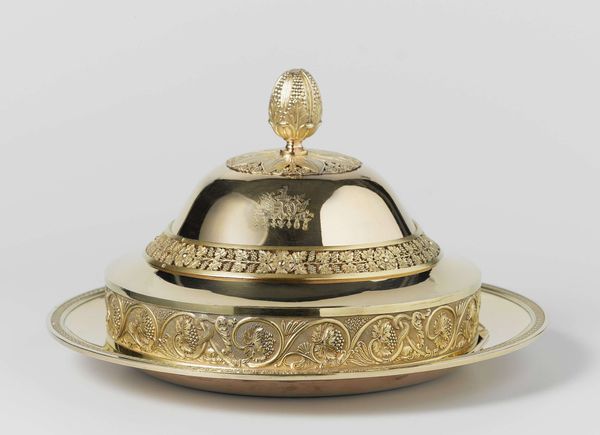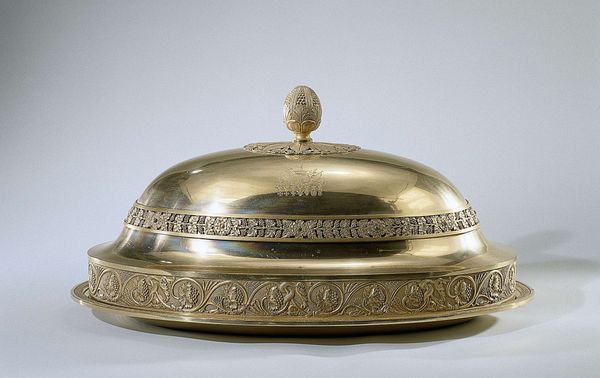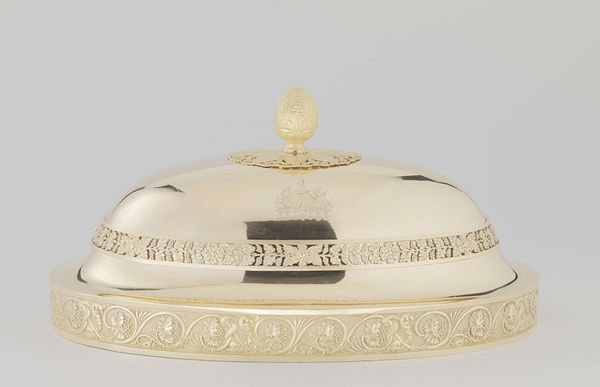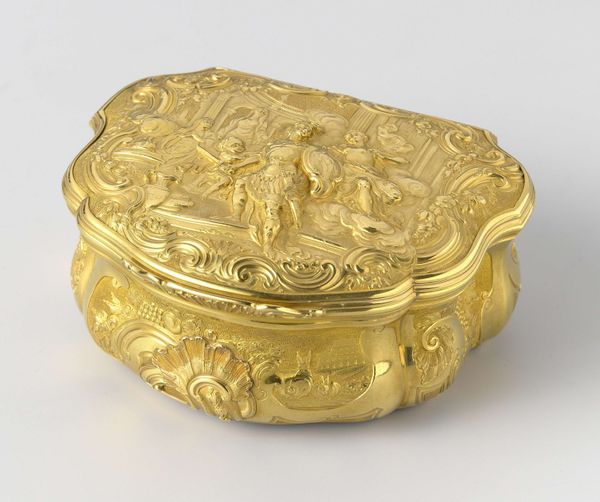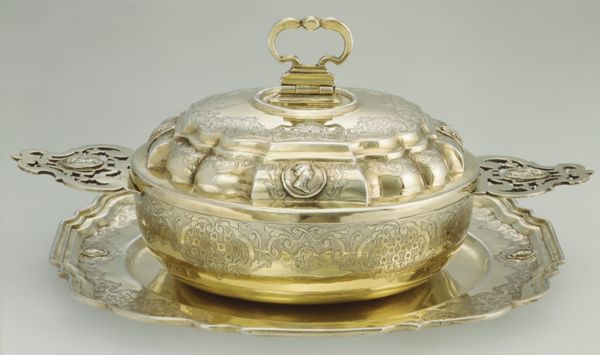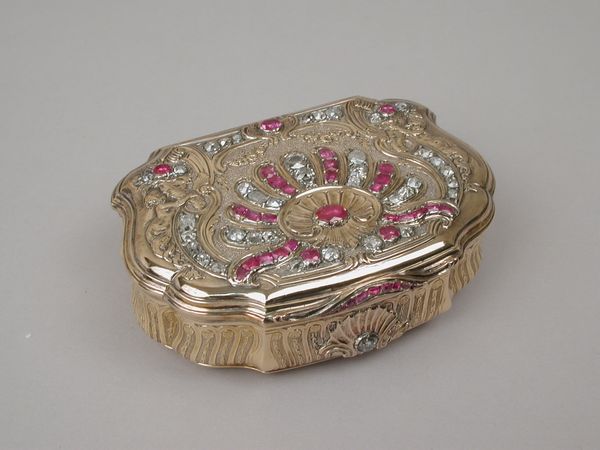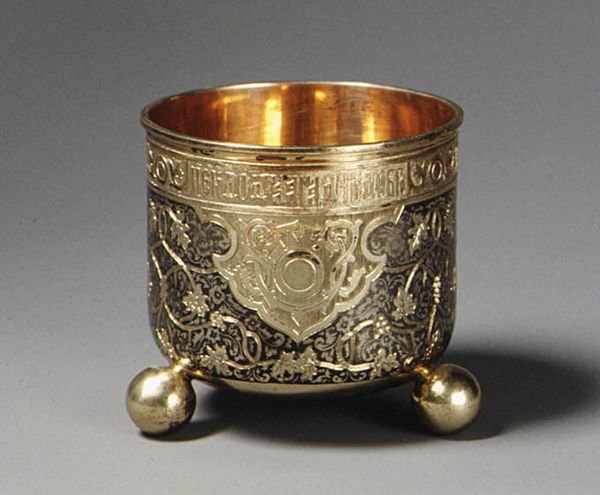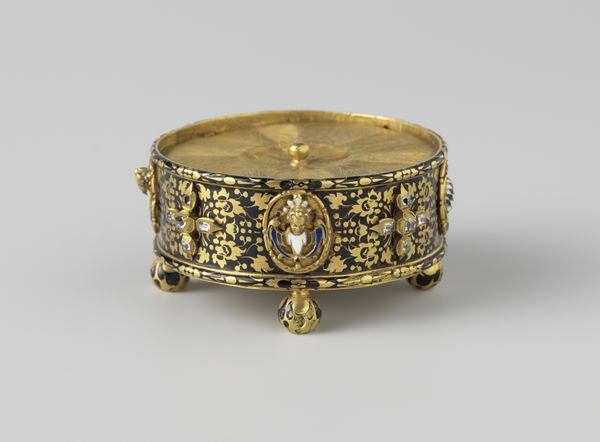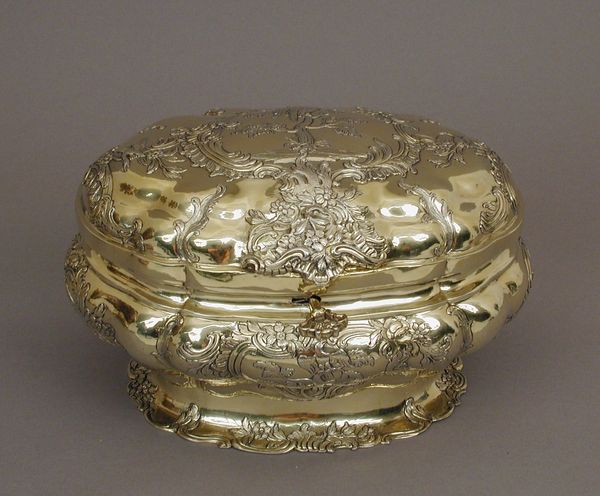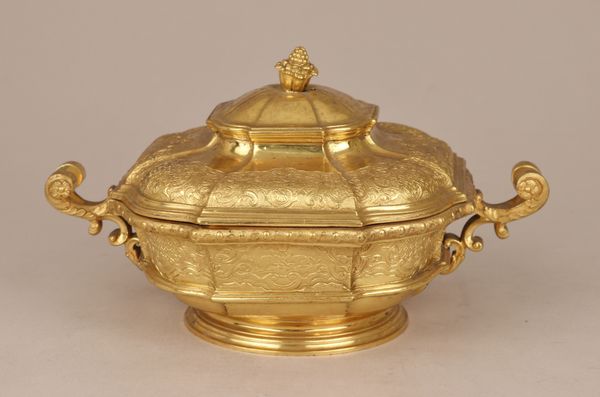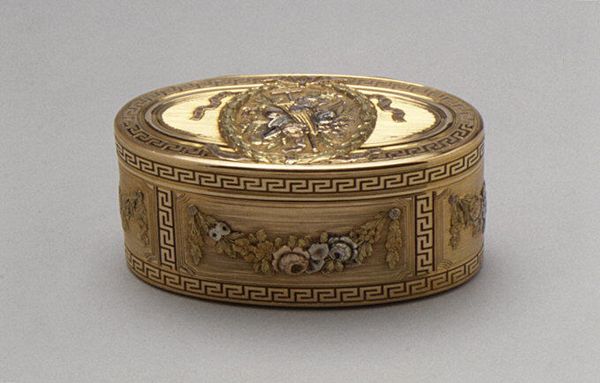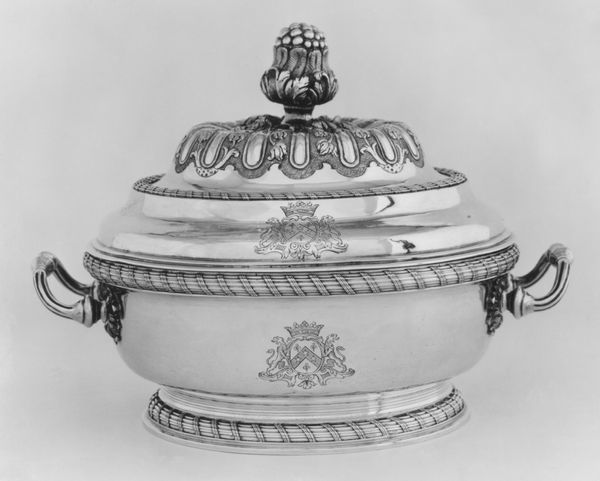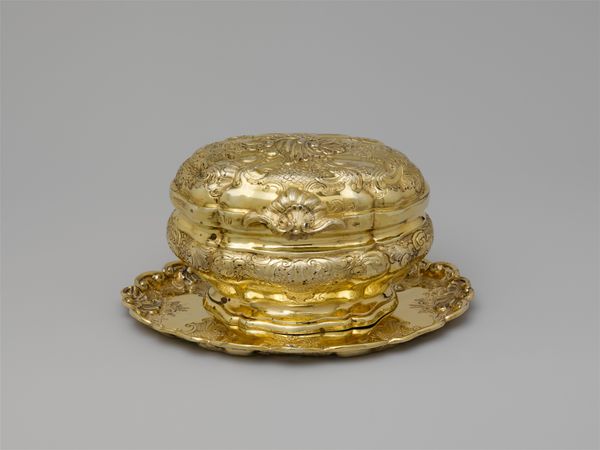
Cloches (dish covers), coolers, soup tureens, sauceboats, salt cellars, pepper and, mustard pots c. 1819
0:00
0:00
brass, silver, metal, sculpture
#
neoclacissism
#
brass
#
silver
#
metal
#
sculpture
#
decorative-art
Dimensions: height 22.2 cm, width 45 cm, depth 27.1 cm, weight 3135 gr
Copyright: Rijks Museum: Open Domain
Curator: This resplendent set of dish covers, coolers, soup tureens, sauceboats, salt cellars, and pepper and mustard pots, created around 1819, hails from the workshop of Jean-Baptiste-Claude Odiot. Its elegant Neoclassical lines gleam in silver and brass. What strikes you first? Editor: The overwhelming shine, honestly! It speaks of wealth and a very specific type of table setting—one that's performative as much as functional. The level of polish is…intense. I immediately start to think about who was tasked with *maintaining* that gleam. Curator: An excellent point. The objects clearly represent not just wealth, but a certain kind of cultural performance tied to dining. I notice repeated vegetal motifs; vines and what appear to be fruiting plants. Are those indicators of prosperity, abundance…or something more pointed? Perhaps a commentary on earthly delights? Editor: Could be a direct reference to what the vessels would have held. Look at the incredibly intricate floral bands around the pieces – that precision comes at the expense of labour and resources. The embodied labour interests me as much as the potential meaning of these symbols you are talking about. How long did something like this take to produce, and under what conditions? Curator: Indeed. Considering the historical moment, these forms revive classical antiquity while proclaiming contemporary mastery and power. The Imperial symbols suggest it might have been commissioned during the reign of Napoleon, who admired such displays of grandeur. Editor: Yes, absolutely. It's fascinating how these objects speak volumes about the socio-economic hierarchies and industrial capacity of the era. They tell of aspiration and the control of production that was necessary to materialize such objects. The symmetry, the detail, everything screams precision and access. Curator: Ultimately, it’s that intersection of symbolism and making that renders the pieces so powerful. They speak to a desire for permanence and control through the symbolism of nature, but also the assertion of industry, wealth and class power. Editor: And they remind us of the hands and processes involved in bringing that vision to life, creating the luxury these objects represent.
Comments
rijksmuseum about 2 years ago
⋮
A confidante of the Russian empress commissioned this 140-piece service, several items of which are displayed here. Silversmith Odiot, the painter Prud’hon and the architect Cavelier proudly presented the new models at the 1819 French national exhibition of decorative art. Notable are the kneeling angels supporting the soup tureen, which are characteristic of the late Empire style.
Join the conversation
Join millions of artists and users on Artera today and experience the ultimate creative platform.
